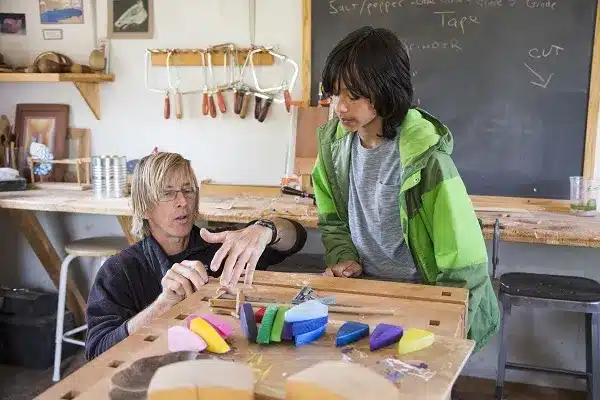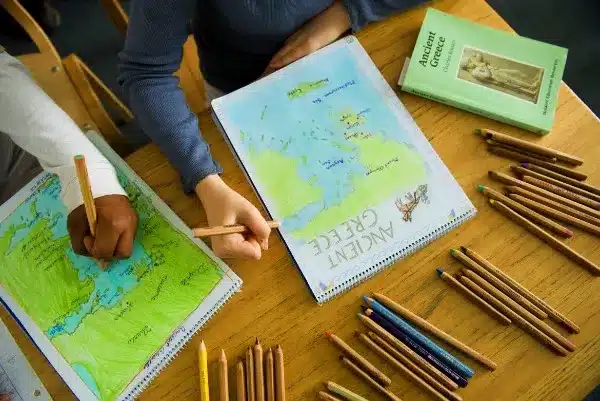“If you’re not prepared to be wrong, you’ll never come up with anything original.” – Ken Robinson
We want our children to succeed in life – finding financial stability, deep life experiences and the actualization of their dreams. While exceptions exist, school achievement is considered a grand testing ground, a predictor of these hallmarks of success. Is it any wonder, then, that parents approach teachers anxiously when a child fails to meet expectations on tests and assignments, despite the fact that true predictors of success–like self-assurance, creative thinking, and ethical decision-making–have little to do with abstract tests and benchmarks? In fact, failure in its own right is one of the most potent ways to approach innovative learning and capacity-building. Simply put, it is a focus on means over ends, approach and effort over grades, and a celebration of failure as a First Attempt In Learning.
Ben Johnson, educator and author of the book Teaching Students to Dig Deeper, discusses the positive power of failure in the classroom in his recent piece for Edutopia — Redefining Failure. He says of failure, “it is a messy process, yet this is what real learning is all about.”
Johnson proposes a “plan-do-study-act” model that encourages initial failure, so that students can use inquiry to observe failure critically, research solutions, and start again differently.
He says, “When we teachers adopt and practice the power of failure in our classrooms, a low mark on a paper or project will no longer signify defeat and despair to our students. Instead, it will signify an opportunity to go back to concept and discover the error in thinking. This encourages students to work together and engage in the iterative learning process of taking failure and making it a success. Creating a space in the classroom for failure also encourages students to approach solving problems in nonlinear ways, using multiple possibilities and futures for refining their thinking.”
This is also the approach touted by Stanford Professor, Carol Dweck, PhD, who has dedicated her life to studying what motivates people to learn and succeed. In her book, Mindset, she explores what she believes to be a killer of creativity and learning: it’s the idea that failure (or success) is a defining and final label for learners.
Those who take failure not as a first attempt to improve, but instead as a fixed reality, will avoid it at all costs – while those who see failure as a natural part of the learning process and the precursor to intelligence, improvement and growth will become lifelong learners with a deep intrinsic motivation to learn new skills.
Dweck believes that this mindset, over intelligence, becomes a natural predictor of life success: “They become lifelong learners, motivated by a passion for stretching and sticking to it, even when it’s not going well.”
So how do teachers embrace and even encourage failure in a busy classroom, with anxious parents and even students determined to chart those established markers of success? For starters, teachers can shift the focus subtly from results-oriented learning to relevant, inquiry-based learning. In practice, this looks like downgrading the urgency of high-stakes testing results, instead prioritizing curiosity and creating lesson plans that relate to students’ more immediate experience.
Take, for example, learning about fractions in an elementary classroom. Lectures, worksheets and practice tests that make sure students can do well in a testing environment have their place, but these drills better serve as secondary approaches. The primary, inquiry-based approach to teaching fractions would be to design relevant, hands-on and practical learning experiences with failure ‘baked’ in. Thus, a teacher might approach fractions by asking students to bake a triple batch of their favorite dessert. If this is most students’ first experience with fractions, failure is delightfully inevitable. What happens when you do fractions wrong in cooking? Their dessert doesn’t taste quite right!
Students in this scenario would be encouraged to use inquiry to better understand fractions and better understand how to apply the calculation of fractions to their lives and projects – right in their own kitchens. Why is tripling a recipe so difficult? How do we accurately measure portions with the tools before us? How do we do the math to triple a recipe? Should we write down the new recipe after we do the math? Would it help the results?
A curious student who is engaged in a relevant lesson, and appropriately motivated, will feel little discouragement in this experience of ‘failure’ and no value in quitting the task. Why would they? They want to get their dessert just right! Such a student will not have anxiety nor fear failure – they will simply be interested in finding the solution, and will do so with much needed creative resilience.
Isn’t this what students need most in the ever-changing 21st century? Skills that go beyond resume-building and test-taking — skills like curious self-motivation, resilience, determination and courage? Ultimately, making classrooms failure-friendly will help all students cultivate the mindset and character traits that build a lifetime love of learning, and the grit needed to tackle complex problem-solving that helps them pursue whatever brand of success they desire.
Photo credit: Shining Mountain Waldorf School





